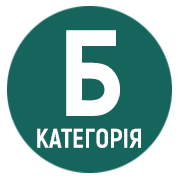Life-like or icon-like? Different understanding of the beauty of religious art among representatives of Russian Intellectual elites of the XIX century
DOI:
https://doi.org/10.31494/2412-933Х-2018-1-6-81-89Keywords:
icon, image, icon-likeness, life-likeness, theology of icon.Abstract
The problem of „icon-likeness‖ or ―life-likeness‖ as the main citerion for assessing the value of icons in Russia has a long history. Already in the 17th century, mamy iconographers began to use in their Works the stylistic means that are characteristic of Western realistic painting – chiaroscuro modeling and portraiture. Int happened that instead of traditional tempera paints, the icon painters wrote with oil paints. As suggested by the Polish researcher, B. Dąb-Kalinowska, at the end of the 17th century, traditional under standing of the theology of icon disappears in Russia. In that under standing the icon should be as close as possibile to its ,,prototype‖, understood as a divine hipostasis of the figure depicted on it. In a tract about the iconic painting written in the secondo half of the 17th century, the iconographer Iosif Vladimirov definitely defended the so-called ,,life-likeness‖, recognizing that the icon should best reflect not the divinity of the saint, but his phisical apperance. The author of this article tries to show that as a result of the decreasing knowledge of theology of the icon in the 18th – 19th century in the consciousness of the Russian elites influenced by the Western culture, the boundary between ,,icon-likeness‖ and ,,life-likeness‖, between the ,,icon‖ and the ,,painting‖ disappeared. The Russian intelligentsia, whose aestetic views were mainly influenced by Western European realistic painting, were fascinated by the beauty of Raphael Santi’s paintings an of the academic religious painting of Alexander Ivanov, Vasily Polenov and Ivan Kramskoy, while rejecting Russian icons as less aestetic and sometimes ,,ugly‖. It was emphasized that among the followers of secular religious painting were such personalities as Nikolay Gogol, Nikolay Chernyshevsky, Alexander Hertzen an Fyodor Dostoyevsky.
References
Алленов М. М., Александр Андреевич Иванов / М.М.Алленов. - Москва, 1980.
Белинский В. Г., Письмо к Гоголю / В. Г. Белинский // Литературное наследие. - Т. 54. - С. 576
Беспалова Н. И. Русские революционные демократы и передовая художественная в России 1860-х годов / Н.И.Беспалова // Русская прогрессивная художественная критика второй половины XIX – начала XX века: Хрестоматия, ред. В. В. Ванслов. - Москва, 1977. - С. 20-24. 4. Боград Г. Л. Произведения изобразительного искусства в творчестве Ф. М. Достоевского (The works of art in the books of F.M. Dostoevski) / Г.Л.Боград. - New York, 1998.
Брюсова В. Г. Русская живопись XVII века / В.Г.Брюсова. – Москва, 1986.
Dąb-Kalinowska B. Między Bizancjum a Zachodem. Ikony rosyjskie XVII – XIX wieku. - Warszawa, 1990.
Mistrz życiodajnego pędzla. Rafael w Rosji XIX wieku // B. Dąb-Kalinowska, Ikony i obrazy. - Warszawa, 2000. - S. 17-29.
Достоевский Ф. М. Бесы // Полное собрание сочинений Ф. М. Достоевского в тридцати томах (дальше: ПСС) / Ф.М.Достоевский. - Т. 10. – Лениград, 1974.
Тот же, По поводу выставки // ПСС. - Т. 21. - Л., 1980. - C. 68-77.
Kobrzeniecka-Sikorska G. Ikona, kult, polityka. Rosyjskie ikony maryjne od drugiej połowy XVII wieku. - Olsztyn, 2000.
Лепахин B. И. Икона в русской художественной литературе / В.И.Лепахин. - Москва, 2012.
Опочин Е. Н., Беседы с Достоевским, Звенья / Е.Н.Опочин. - Т. 4. -1936. - C. 468.
Stempczyńska B. Dostojewski a malarstwo / B. Stempczyńska. - Katowice, 1980.
Тарасов О. Ю. Икона и благочестие. Очерки иконного дела в Императорской России / О.Ю.Тарасов. - Москва, 1995.
Тот же, “Расхожая” икона в русской художественной культуре XVIII – начала XX века // Культура средних веков и Нового времени. - Москва, 1987.
Тот же, Русская икона в Серебряном веке. Из истории Комитета попечительства о русской иконописи (1901 – 1918) // Искусствознание. - 2010. - № 3-4.
Толстой Л. Н. Что такое искусство? / Л. Н. Толстой // Полное собрание сочинений в 90 томах. - Т. 30. - Москва, 1951. - С. 452 – 455.






